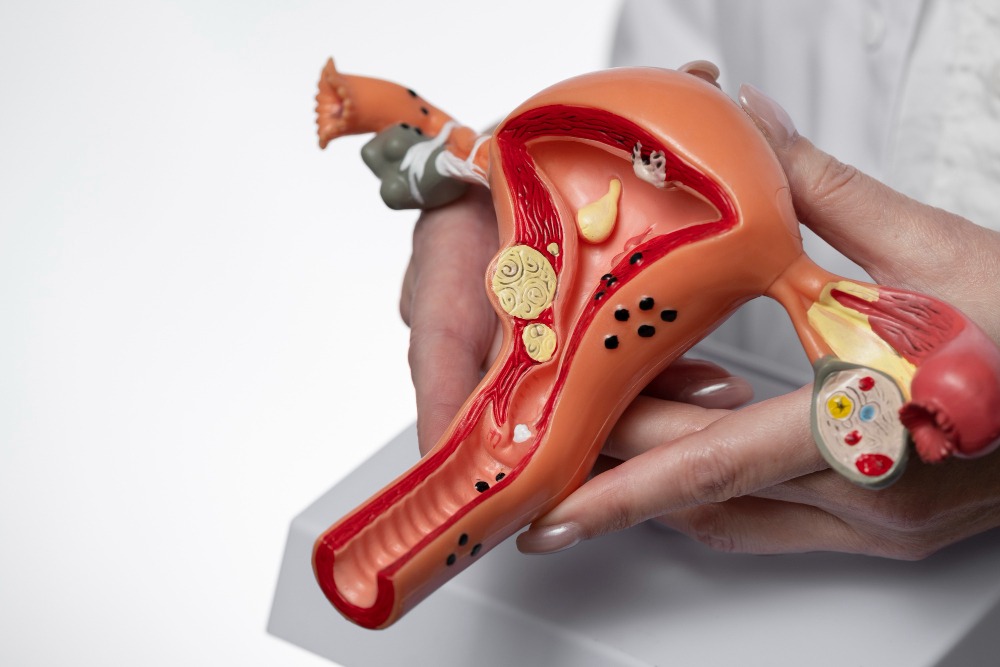
What is Vaginal Myomectomy?
Vaginal myomectomy is a surgical procedure performed to remove uterine fibroids (myomas) through the vagina. It is a minimally invasive approach to treating fibroids located within the uterine wall or protruding into the uterine cavity. Vaginal myomectomy offers advantages such as faster recovery, shorter hospital stay, and reduced risk of complications compared to abdominal or laparoscopic myomectomy.
How is Vaginal Myomectomy Performed?
Vaginal myomectomy is typically performed under general anesthesia with the patient lying on her back with legs elevated in stirrups. The surgeon makes an incision inside the vagina and removes the fibroids from the uterine wall or cavity. Depending on the size and location of the fibroids, different techniques may be used, such as enucleation (removal of the fibroid tissue) or morcellation (cutting the fibroid into smaller pieces for removal). Any necessary repairs to the uterine wall or surrounding tissues may also be performed.
Who is a Candidate for Vaginal Myomectomy?
Women with symptomatic uterine fibroids located within the uterine wall or protruding into the uterine cavity may be candidates for vaginal myomectomy. A thorough evaluation by a gynecologist or fibroid specialist is necessary to determine candidacy and discuss the potential risks and benefits of the procedure. Factors such as the size, number, and location of the fibroids, as well as the patient's fertility goals and overall health, will also be considered in the decision-making process.
What is the Recovery Process Like After Vaginal Myomectomy?
The recovery process after vaginal myomectomy varies depending on individual healing factors and the specific techniques used during the procedure. Patients may experience some discomfort, vaginal bleeding, or discharge in the days following surgery. Pain medication, antibiotics, and instructions for caring for the incisions or vagina may be provided to promote healing and prevent complications. Most patients can resume normal activities within a few weeks after vaginal myomectomy, although strenuous activity and sexual intercourse may be restricted for some time.
What is the procedure after surgery?
Rest and Limit Activity: Avoid strenuous activities, heavy lifting, and vigorous exercise for the recommended period.
Keep the Area Clean: Gently clean the surgical area with water and mild soap as directed by your surgeon. Pat the area dry with a clean towel, and avoid rubbing or scrubbing.
Take Prescribed Medications: Take any prescribed pain medications, antibiotics, or other medications as instructed by your surgeon to manage pain and prevent infection.
Avoid Sexual Activity: Refrain from sexual intercourse and other sexual activities until your surgeon advises it is safe to do so. This typically takes several weeks to a month or more, depending on individual healing.
Wear Loose Clothing: Wear loose-fitting clothing, preferably cotton underwear, to minimize friction and promote airflow to the surgical area.
Attend Follow-Up Appointments: Keep all scheduled follow-up appointments with your surgeon to monitor your healing progress and address any concerns or complications promptly.
Avoid Tampons and Menstrual Cups: Refrain from using tampons and menstrual cups during your recovery period to prevent irritation and infection.
Stay Hydrated and Eat Nutritious Foods: Drink plenty of water and eat a balanced diet rich in vitamins and nutrients to support healing and boost your immune system.
Why Choose Samarpan Hospital for Vaginal Myomectomy?
Samarpan Hospital in Hisar, Haryana, offers expert care and advanced treatment options for women requiring vaginal myomectomy. Our team of experienced gynecologists, fibroid specialists, and minimally invasive surgeons is dedicated to providing personalized care and optimal outcomes for each patient. With state-of-the-art facilities, cutting-edge technology, and a patient-centered approach, Samarpan Hospital is committed to delivering the highest quality of care and improving the lives of women with symptomatic uterine fibroids.